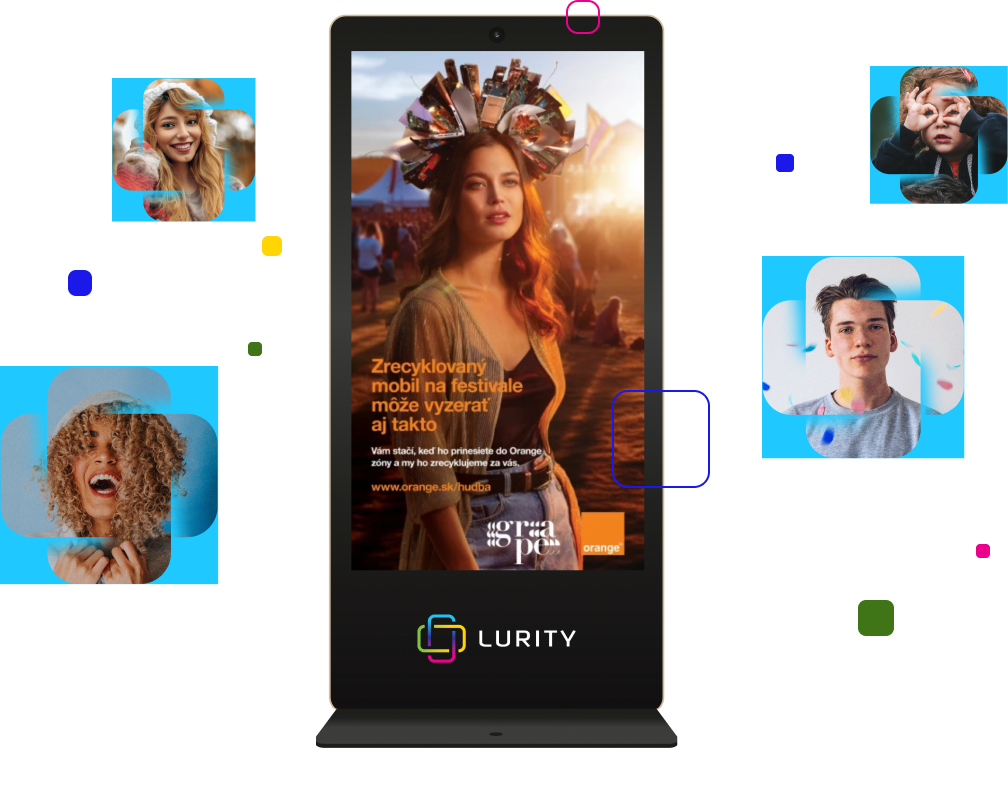Digital out-of-home (DOOH) advertising – once sci-fi, now our everyday reality. We're standing by the road, waiting for the train, walking through a shopping mall – and the screens around us are moving, reacting, glowing... sometimes they even seem to know it’s raining. That’s DOOH. And more and more brands now see it as an essential part of their media strategy.
So why is that? Let’s break it down into five key reasons – supported by real-world examples.
1. Because it’s where people are – and when they’re ready to act
oday’s digital screens live in shopping malls, parking lots, public transit, gyms… Basically, wherever people are physically present and mentally open to interaction. That’s a huge difference from banner ads that most users scroll past (if they even load them).
Did you know that 76% of people who saw a DOOH ad took some form of action? (Source: StackAdapt)
2. Because it’s up-to-date – like your morning tweet
magine a campaign that changes with the day. Morning: coffee deals. Afternoon: lunch offers. Or a countdown for your Black Friday sale, a weekend flash promo, or a real-time visual switch depending on the weather.
McDonald's UK launched a campaign where chilled drinks only appeared on screens when the temperature rose above 22°C. It worked — and customers noticed.
Lurity allows clients to update visuals in minutes — no printing, no logistics, no delay.
3. Because hyper-local targeting is a superpower
DOOH isn’t about mass reach at all costs. Quite the opposite — the more precisely you can answer who, where, and when, the more effectively you can speak to your audience.
Značka krmiva pre psy v USA (Nulo) spustila kampaň len v 8 km rádiu okolo predajní – výsledok? +40 % nárast brand awareness a výrazný rast nNulo, a pet food brand in the US, ran a DOOH campaign only within an 8 km radius of their retail locations. The result? A +40% increase in brand awareness and a significant rise in in-store visits.
With Lurity, brands can pick exactly where to be visible — like only in Aupark Bratislava, only in Košice, or only in selected fitness clubs.
4. Because it connects offline with online – and that synergy works
DOOH isn’t just about the physical world anymore. It increasingly acts as a trigger for digital engagement. QR codes, geofencing, mobile ad pairing — all these help to create a seamless, cross-channel brand experience.
Amazon Prime Video used 3D DOOH billboards in London and New York to promote a new series — people took pictures, shared them, searched for the trailer and boosted the campaign’s reach organically.
When a DOOH ad includes a clear call-to-action, redirect link, or connects well with the online portion of a campaign, it becomes a powerful engagement driver.
5. Because campaign performance is transparent – it's way more than “just a pretty screen”
DOOH has moved far beyond “we hope people saw it.” Today, performance can be tracked in real-time — impressions, foot traffic, timing, creative impact. Clients can immediately see what’s working and adjust accordingly.
In a global Magnum campaign, DOOH was used across multiple cities with different creatives. Based on live results, the media spend was redirected toward high-performing locations. Flexibility + efficiency.
Platforms like Lurity provide real-time dashboards, giving clients full visibility into what’s working — and what needs to change.
DOOH is no longer “extra” — it’s a must-have
Digital OOH is now a full-fledged part of modern campaigns. It’s not about “trying one billboard.” It’s about integrating it smartly with your online, mobile, PR, and social strategy. And when you get that mix right, DOOH delivers campaigns that don’t just get noticed — they drive real results.
Try it effectively



